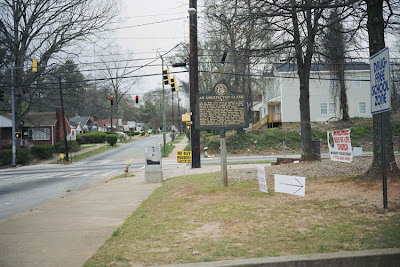



No, I will not be writing about how the ever-present cameras turn us into monsters. Or about consumerism versus culture.
What interests me here, to start with, is how we position ourselves in relation to the past.
What is given to us is not merely a luggage - a heritage that is like an object. It is an ever-eroding landscape. And each person has her own map she may or may not use to rebuild it, or rather, to build herself into it.
Watch these bodies. These figures. Watch how they open a dialogue they are not aware of. Watch how they become, that's it, a sign.
Maybe the most dramatic is the last one, the young man lying on the ground, his hands close to his face. Forget his camera. Now, what do you see?
Or maybe the most dramatic is the first, black figure, that is watching birds through binoculars, or a plane, or he could almost be shouting a friendly greeting to someone standing on the roof... were it not the seemingly anonymous bricks behind him. Were it not our maps. And now, with your map, what do you see? Who is hitting him? Shooting?
Or rather, what is he, what are they protecting themselves against?
What makes a sign a sign?
When does it signify, lead to the signified? How does the arrow gain its shape? How is it born?
How much of these vectors is rooted in us so deeply, we spell it out with every word, unknowingly?
Take this much less spectacular project by William Boling, called Never Gone. Boling took photographs of the places in Atlanta where the Battle of Atlanta occurred in July 1864.



So what makes a sign a sign?
When does it signify, lead to the signified? How does the arrow gain its shape? How is it born?
How much of these vectors is rooted in us so deeply, we spell it out with every word, unknowingly?

4 comments:
VVOI, in your view...is it a 'chicken or the egg' type of inquiry to try to locate the signifier? I.e., if all signifiers are preceded and followed by signifieds in order to 'understand' their content, how is it that anything can be comprehensible? How do we stop the infinite conceptual regress, in other words? Thanks for the post and for posing the question!
yes i agree Theodore
hmm.
my most recent show is called 'small narration', and is to a great extent about trying to get to the/a "bottom line", and about the struggle between the universe of small truths, the ones that seem to exist within unending chains of signifier-signified, and the events that seem impossible to put in that order, the Events, so to speak.
it's a very interesting question you ask. i have my own, fairly intuitive, attempts at answering - if we think about the photos in the post in relation to the historic events they "represent" (or refer to), they have a "bottom line". the event (as seen by us, obviously) is being "fed" by them. we stop at the event arbitrarily (we could go on beyond), yet its relative importance for the present "us" is such that the vectors end there. and then, of course, we never get to see the whole picture, so the chain never stops. if you don't want it to - e.g., the info i have about the battle of atlanta are enough for me for now. why would i want a 10 million pixel camera in my phone if the lens only manages to cope with 2MP?
This is gorgeous.
The first time that I saw his work (Roger Cremers) I found it hidden among other genius.
Funny how genius piled on genius is only a mediocre muddle with bright lights illuminating the mass with the knowledge that SOMETHING has been created that we don't understand...
Please discover: in-public.com
Cremers and others are all there. :)
And thank you for YOUR genius. I thoroughly enjoy reading what you have written, which means something.
I HATE BLOGS.
Sincerely yours.
Post a Comment